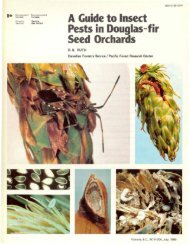the translocation of minerals in trees - Canadian Forest Service
the translocation of minerals in trees - Canadian Forest Service
the translocation of minerals in trees - Canadian Forest Service
You also want an ePaper? Increase the reach of your titles
YUMPU automatically turns print PDFs into web optimized ePapers that Google loves.
upper part; (4) when <strong>the</strong>re is an excess <strong>of</strong> <strong>the</strong> particular element than when<br />
it is deficient; (5) more, especially <strong>of</strong> nitrogen, when <strong>the</strong> roots have a low carbohydrate<br />
content than when it is high; (6) possibly more <strong>of</strong> <strong>the</strong> salts like calcium,<br />
z<strong>in</strong>c, and iron, that are not greatly accumulated <strong>in</strong> liv<strong>in</strong>g cells; and (7) possibly<br />
more <strong>of</strong> <strong>the</strong> elements that are less likely to be carried <strong>in</strong> comb<strong>in</strong>ation with organic<br />
molecules" .<br />
ADVANTAGES AND METHODS OF USING RADIOISOTOPES IN<br />
TRANSLOCATION STUDIES<br />
In older methods <strong>of</strong> research on <strong>translocation</strong>, dyes )vere used which were<br />
<strong>in</strong>jected <strong>in</strong>to <strong>the</strong> tree, and could be detected visually when <strong>the</strong> tree was cut down.<br />
This technique was applicable more to <strong>the</strong> study <strong>of</strong> water movement than to<br />
that <strong>of</strong> <strong>translocation</strong> <strong>of</strong> <strong>m<strong>in</strong>erals</strong>. O<strong>the</strong>r workers used poisons and <strong>the</strong>y hoped<br />
that <strong>the</strong> movement <strong>of</strong> a poison would be accompanied by external symptoms<br />
such as a change <strong>in</strong> appearance <strong>of</strong> <strong>the</strong> foliage. It was not until <strong>the</strong> radioisotope<br />
became available that <strong>in</strong>vestigators could tag an element which would emit<br />
detectable radiation, and thus permit its observation without ·kill<strong>in</strong>g <strong>the</strong> tree.<br />
There are several k<strong>in</strong>ds <strong>of</strong> radiations. Accord<strong>in</strong>g to <strong>the</strong> present atomic<br />
<strong>the</strong>ory, <strong>the</strong> atom is made <strong>of</strong> a nucleus about which revolve particles known as<br />
electrons. The mass <strong>of</strong> <strong>the</strong> atom is found primarily <strong>in</strong> <strong>the</strong> nucleus which, for<br />
present purposes, consists <strong>of</strong> protons hav<strong>in</strong>g a positive charge and neutrons<br />
hav<strong>in</strong>g no charge. The neutrons affect <strong>the</strong> mass but not <strong>the</strong> chemical properties<br />
<strong>of</strong> <strong>the</strong> element, and atoms which vary <strong>in</strong> nuclear mass but have <strong>the</strong> same chemical<br />
behaviour are called isotopes. When <strong>the</strong>se emit radiations which may be<br />
detected by various types <strong>of</strong> counters, <strong>the</strong>y are referred to as radioisotopes.<br />
Radiations are <strong>of</strong> three types depend<strong>in</strong>g on <strong>the</strong> characteristics <strong>of</strong> <strong>the</strong> radioisotope.<br />
(1) Alpha rays: are helium nuclei or alpha particles which have a relatively<br />
large mass compared with electrons but possess a<br />
very limited penetration power.<br />
(2) Beta rays:<br />
are negative electrons emitted from atomic nuclei; <strong>the</strong>se<br />
have a limited penetration power but give good resolution<br />
<strong>in</strong> autoradiography.<br />
(3) Gamma rays: are electromagnetic radiation similar to X-rays; <strong>the</strong>se<br />
are very penetrat<strong>in</strong>g and may be easily detected by<br />
external monitor<strong>in</strong>g.<br />
The last two types <strong>of</strong> radiations are most suitable for biological research<br />
and problems perta<strong>in</strong><strong>in</strong>g to forestry.<br />
Radioisotopes are useful <strong>in</strong> biological research <strong>in</strong> several ways. They are<br />
very good analytical tools which <strong>in</strong>crease <strong>the</strong> sensitivity and ease <strong>of</strong> analysis<br />
available through conventional methods. They also permit <strong>the</strong> measurement<br />
<strong>of</strong> ion fluxes <strong>in</strong> a given direction even when <strong>the</strong>re is no net flux <strong>of</strong> that ion, or<br />
when <strong>the</strong> net flux is <strong>in</strong> <strong>the</strong> opposite direction. In tree <strong>in</strong>vestigations <strong>the</strong> use <strong>of</strong><br />
<strong>the</strong> radioisotope permits detection with<strong>in</strong> <strong>the</strong> tree by external monitor<strong>in</strong>g.<br />
This has certa<strong>in</strong> advanLages over older methods s<strong>in</strong>ce <strong>the</strong> tree does not have to<br />
be sacrificed <strong>in</strong> order to determ<strong>in</strong>e <strong>the</strong> <strong>translocation</strong> <strong>of</strong> <strong>the</strong> element with<strong>in</strong> <strong>the</strong><br />
tree.<br />
The major <strong>m<strong>in</strong>erals</strong> required by <strong>trees</strong>, as <strong>in</strong>deed by plants <strong>in</strong> general, <strong>in</strong>clude,<br />
<strong>in</strong> addition to carbon, hydrogen and oxygen, thirteen m<strong>in</strong>eral elements-potassium,<br />
calcium, magnesium, nitrogen, phosphorus, sulphur, iron, manganese,<br />
z<strong>in</strong>c, copper, molybdenum, boron and chlor<strong>in</strong>e. Of <strong>the</strong>se, only nitrogen and<br />
boron have no radioisotopes suitable for tracers. Several o<strong>the</strong>r elements such<br />
as sodium, cobalt, and rubidium, although not known to be essential, posse s<br />
suitable isotopes and are <strong>of</strong> physiological <strong>in</strong>terest. Grow<strong>in</strong>g plants <strong>in</strong> nutrient<br />
7



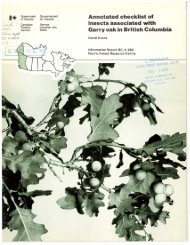
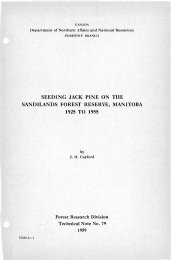
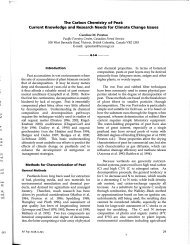


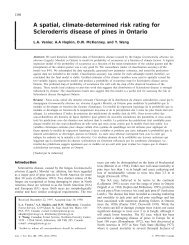

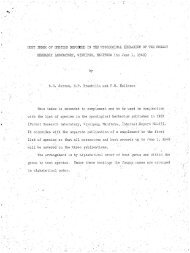
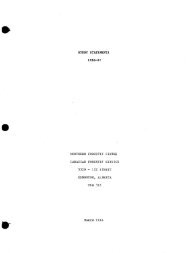
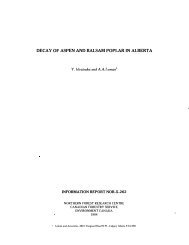
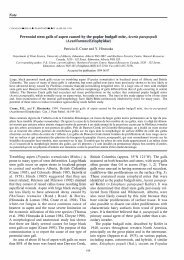
![Po],rell](https://img.yumpu.com/11946277/1/190x231/porell.jpg?quality=85)
